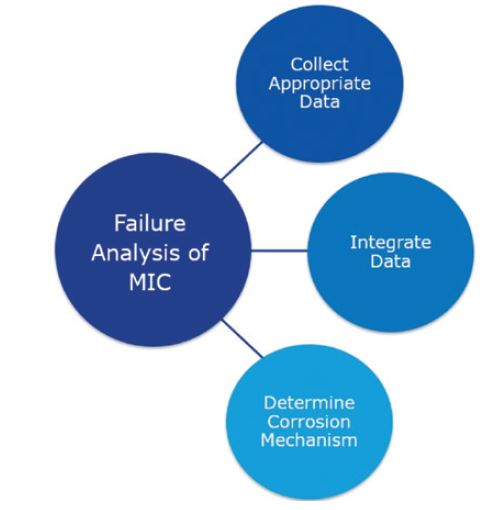Microbiologically influenced corrosion (MIC) is a global problem. Understanding why corrosion has occurred enables pipeline operators to better implement proper mitigation methods.
The problem of MIC
The strategy for addressing MIC can be very different from other types of corrosion mechanisms. Mitigating the wrong corrosion mechanism can lead to no reduction in the rates of corrosion, leaving pipeline operators at a loss of time and resources. If ineffective treatments are used for too long; loss of containment can occur leading to devastating outcomes. When failures occur, it is vital to perform thorough investigations to identify the cause and explore if MIC was a factor.
If ineffective treatments are used for too long; loss of containment can occur leading to devastating outcomes. When failures occur, it is vital to perform thorough investigations to identify the cause and explore if MIC was a factor. In a widely publicized case in August of 2000 MIC resulted in the rupture of a 30” diameter high-pressure natural gas pipeline near Carlsbad, New Mexico leading to a fire, killing 12 individuals.
There is no one parameter that correlates to the presence and severity of MIC. Diagnosis requires collecting a lot of distinct categories of data and demands careful integration of the data to assess whether MIC is the corrosion mechanism.
Inspectioneering article feature
In a Framework for Conducting Analysis of Microbiologically Influenced Corrosion Failures, published in Inspectioneering Journal, DNV’s Corrosion Engineer Dr Susmitha Purnima Kotu and retired Senior Principal Engineer Richard B. Eckert, provided a robust review of the three-step failure analysis process.
The cover feature article provides an in-depth approach to failure analysis with a detailed walkthrough of the following steps:
- Data Collection: Different categories of data to be collected and the methods used to collect these data
- Data Integration: Integrate different types of data related to microbiology, chemical environment, physical environment, and materials and corrosion products.
- Corrosion Mechanism Determination: Elimination of abiotic corrosion mechanisms and identifying MIC as a possible failure mechanism.

The article provides case studies highlighting the process and outcomes of analysis providing a summary of evidence gathered and potential sources and walks through the following areas of an investigation process:
- Materials and corrosion products
- Chemical Environment
- Physical Environment
A reliable diagnosis of the corrosion mechanism allows pipeline and plant operators the ability to improve mitigation and prevention measures.
Tackling the global challenges posed by MIC
The framework for conducting analysis is always evolving and industry-leading corrosion experts are hard at work looking for new ways to quickly identify MIC in the field.
“There is an opportunity to improve MIC diagnosis by discovering biomarkers that can be used for early detection and predicting the severity of MIC,” Dr Kotu, “that is why we have partnered with ExxonMobil Upstream Research Company and Microbial Insights, Inc. on a joint industry project (JIP) to discover biomarkers.”
Identification of MIC as a corrosion mechanism is not straightforward. A reliable diagnosis requires integrating evidence on microbiology, physical and chemical environment, corrosion products, and materials of construction. Elimination of abiotic corrosion mechanisms is an important step in the identification of MIC as a failure mechanism. Using molecular microbiological methods such as qPCR, DNA sequencing, and ATP provide more reliable information than serial dilution testing alone to understand important microbiological parameters.
DNV’s extensive experience with field abiotic corrosion and MIC failure analysis for offshore and onshore pipelines, onshore distribution systems, process plants, and others can be reviewed, In A Framework for Conducting Analysis of Microbiologically Influenced Corrosion Failures.
Read the full-featured article in Inspectioneering Journal.